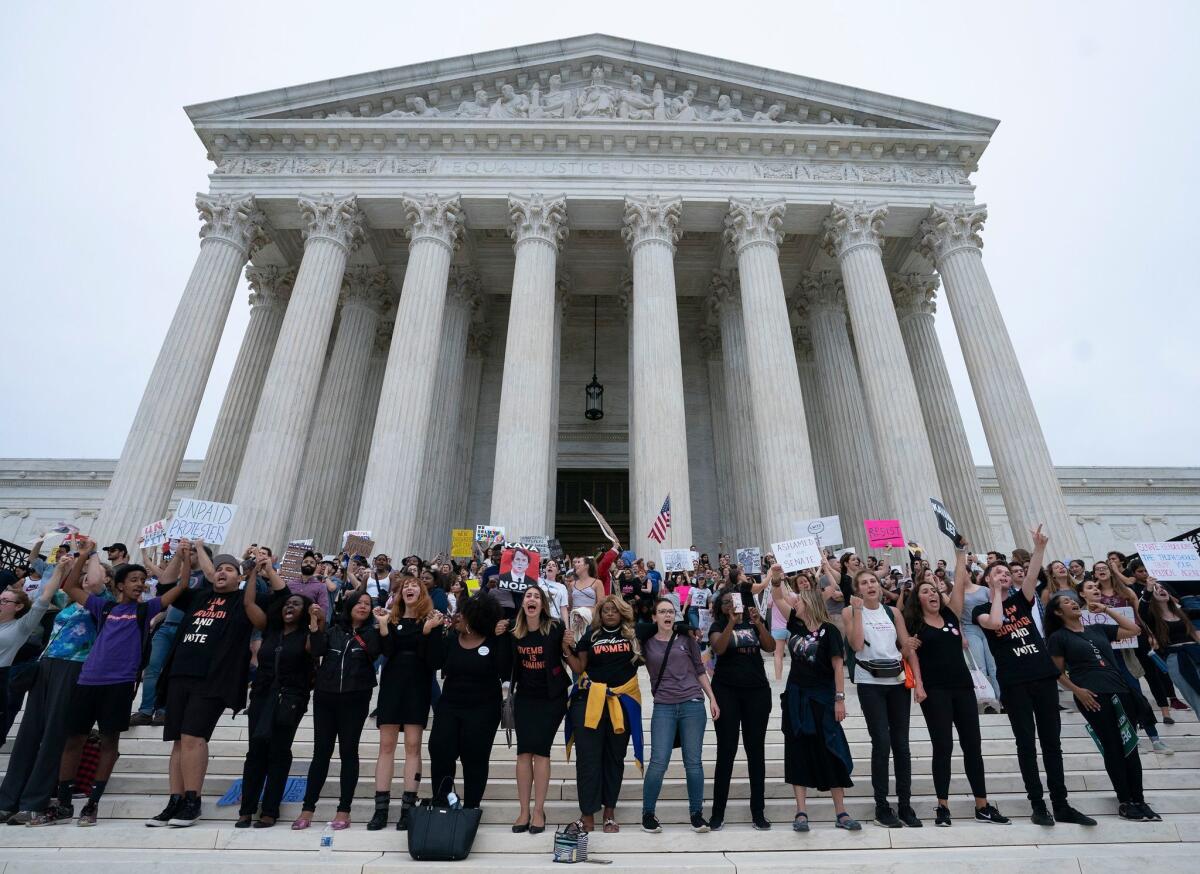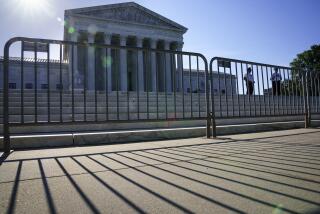Column: Maybe it’s time to expand the Supreme Court

WASHINGTON — The Supreme Court could soon have its most conservative majority in almost a century — created by a president who just lost an election and confirmed by a lame-duck Senate.
President Trump’s vow to name a successor to the late liberal Justice Ruth Bader Ginsburg and Senate Majority Leader Mitch McConnell’s decision to hold hearings and a floor vote on the nomination make sense only by the logic of our increasingly partisan politics.
Since Trump took office in 2017, the Republican-controlled Senate has confirmed nearly 200 conservative judges with lifetime appointments to lower courts — almost one-fourth of all active federal judges — plus two Supreme Court justices, Neil M. Gorsuch and Brett M. Kavanaugh.
Adding a third Supreme Court justice would lock in a 6-3 conservative majority on the high court for years to come.
But if voters turn Trump out of office and elect a Democratic House and Senate in six weeks, the contrast will be grotesque: a nation swinging to the left while its Supreme Court steers hard right.
No wonder so many Democrats are outraged — not only by McConnell’s glib reversal of his own 2016 “rule” against election-year nominations but by the prospect that Trump’s legacy — even if he loses — will be a Supreme Court ready to curb abortion, overturn Obamacare, restrict voting rights and turn back the clock on civil rights.
So Democrats are seriously considering changing the rules if they win both houses of Congress — either by imposing term limits for Supreme Court justices or by adding more seats to the court.
Term limits are eminently sensible. They would end the ghoulish system of waiting, in most cases, for justices to get sick or die to change the lineup. But it would require a constitutional amendment and take far too long to satisfy Americans who believe the court is out of step.
That leaves court packing, a brute-force remedy that can be accomplished by an act of Congress. The idea would be to add (in one version) four seats, to enable the next president — Joe Biden, presumably — to swing the court’s majority from conservative to liberal.
To be fair, there’s nothing sacred about nine justices sitting in black robes. The first court had six justices, and Congress added and subtracted seats repeatedly between 1789 and 1869.
But it has been nine justices since then, so adding more would shatter a norm — something we’ve seen a lot of in the Trump years. If Democrats force it through, it’s a little late for Republicans to flap their arms over a lack of bipartisan support.
Biden is not on board, at least not yet. He’s an institutionalist by instinct and history. Last year, he said he opposed court packing because it would harm the court’s “credibility.” But momentum is growing among Democrats, especially progressives.
Sen. Edward J. Markey of Massachusetts, a member of the Senate Judiciary Committee, and Rep. Jerrold Nadler of New York, chairman of the House Judiciary Committee, say they’re in favor.
Senate Democratic Leader Charles E. Schumer of New York says enlarging the high court will be “on the table” if Republicans confirm another justice this year.
What’s missing? Most of the public isn’t behind the idea — not yet, at least.
A Marquette University Law School Poll last year found that voters oppose enlarging the Supreme Court by 57% to 42%, with Democrats evenly divided. Term limits for judges, by contrast, had broad bipartisan support.
But those numbers will probably change — both because Democrats will begin campaigning for court packing and because the new Supreme Court may alarm voters once it begins to issue conservative rulings.
“The public isn’t there yet,” Maya Sen, a Supreme Court scholar at Harvard’s Kennedy School of Government, told me. “But if a new majority on the court strikes down” the Affordable Care Act, which established Obamacare, “and takes up a direct challenge to Roe vs. Wade,” the 1973 decision that established the right to abortion, “we will be having a different conversation.”
Those rulings are all but certain if the Senate confirms Trump’s new nominee, which Republicans already have the votes to do.
“This is all about Roe vs. Wade,” Barry Friedman, a professor at New York University Law School, told me. “That’s the promise Trump and McConnell have made to Republican voters and evangelicals.”
The last time the court was this conservative was in the 1930s, when a Republican majority struck down much of President Franklin D. Roosevelt’s ambitious New Deal economic program in the depths of the Great Depression.
After winning reelection in 1936, Roosevelt retaliated by proposing to add as many as six justices to the court, touching off a national furor. His court-packing plan failed, but only after the court stopped blocking his New Deal legislation.
Roosevelt “lost the battle over court packing but won the war, because the court flipped,” Friedman said.
This time, that kind of happy ending seems improbable. A new conservative majority is likely to chip away at abortion rights, even if it doesn’t overturn Roe vs. Wade in its entirety.
And this generation’s Democrats aren’t likely to be deterred by Roosevelt’s failure. It didn’t hurt FDR too badly; he went on to win reelection two more times.
If Trump gets the 6-3 conservative majority he seeks, his judicial legacy will appear assured, even if he is sent packing.
But if the results prompt Americans to support a Democratic court-packing plan, his achievement could be short-lived — except for the damage it does to the legitimacy of the court.
More to Read
Get the L.A. Times Politics newsletter
Deeply reported insights into legislation, politics and policy from Sacramento, Washington and beyond. In your inbox three times per week.
You may occasionally receive promotional content from the Los Angeles Times.











